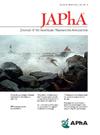Evaluation of pharmacist-led management of type 2 diabetes using personal continuous glucose monitors across a large tertiary academic health system
IF 2.5
4区 医学
Q3 PHARMACOLOGY & PHARMACY
Journal of the American Pharmacists Association
Pub Date : 2025-04-04
DOI:10.1016/j.japh.2025.102397
引用次数: 0
Abstract
Background
There is limited but positive evidence of the impact of pharmacists in managing patients with type 2 diabetes (T2D) using a personal continuous glucose monitor (CGM). Previous studies have been limited to single clinic pilots or community pharmacies with small sample sizes.
Objectives
To evaluate the impact on glycemic outcomes of an innovative pharmacist-led Diabetes Management and Education Clinic (DMEC) on patients with T2D using a personal CGM.
Practice description
The DMEC operates in primary care settings in a large, tertiary academic health care system serving a large patient population. Pharmacists manage care for patients with T2D who are referred by primary care and specialty medical providers under a collaborative practice agreement.
Practice innovation
To use CGM data to guide decision making for clinical pharmacists seeing patients with T2D in the DMEC.
Evaluation methods
This was a retrospective study conducted at the DMEC over 2 years. Demographics and glycemic outcomes were collected from the electronic medical record for patients who had a personal CGM prior to the initial clinic visit, supplied during the visit, or ordered as a prescription. A descriptive analysis was completed for this study.
Results
DMEC pharmacists used CGMs to guide treatment decisions for 165 patients. The average hemoglobin A1c decreased by 1.48% at 3 months (P < 0.001) and 1.74% at 6 months (P < 0.001) after initial visit. Time in range improved by 8.2% at 3 months (P < 0.001) and by 12.1% at 6 months (P < 0.001). The glucose management indicator decreased by 0.27% at 3 months (P < 0.001) and 0.53% at 6 months (P < 0.001). The average glucose decreased by 13.5 mg/dL at 3 months (P < 0.001) and 18.8 mg/dL at 6 months (P < 0.001).
Conclusion
Pharmacist-led management of T2D using personal CGMs can improve diabetes outcomes in a large academic health care system.
评估药师主导的管理使用个人连续血糖监测仪在一个大型三级学术卫生系统2型糖尿病。
背景:关于药剂师在使用个人连续血糖监测仪(CGM)管理 2 型糖尿病(T2D)患者方面的影响,有有限但积极的证据。以往的研究仅限于样本量较小的单个诊所试点或社区药房:目的:评估由药剂师主导的创新型糖尿病管理和教育诊所(DMEC)对使用个人连续血糖监测仪的 T2D 患者血糖结果的影响:糖尿病管理和教育门诊在一个大型三级学术医疗保健系统的初级医疗机构开展,为大量患者提供服务。药剂师根据合作实践协议,对初级保健和专科医疗提供者转介的 T2D 患者进行护理管理:实践创新:使用 CGM 数据为在 DMEC 为 T2D 患者看病的临床药剂师提供决策指导:这是一项在 DMEC 进行的为期两年的回顾性研究。研究人员从电子病历中收集了患者的人口统计学特征和血糖结果,这些患者在首次就诊前就已安装了个人 CGM,或在就诊期间安装了 CGM,或以处方形式订购了 CGM。本研究完成了描述性分析:结果:DMEC 的药剂师使用 CGM 为 165 名患者的治疗决策提供指导。三个月后,血红蛋白 A1c 平均下降了 1.48%(p):在大型学术医疗保健系统中,药剂师使用个人 CGM 对 T2D 进行指导管理可改善糖尿病治疗效果。
本文章由计算机程序翻译,如有差异,请以英文原文为准。
求助全文
约1分钟内获得全文
求助全文
来源期刊
CiteScore
3.30
自引率
14.30%
发文量
336
审稿时长
46 days
期刊介绍:
The Journal of the American Pharmacists Association is the official peer-reviewed journal of the American Pharmacists Association (APhA), providing information on pharmaceutical care, drug therapy, diseases and other health issues, trends in pharmacy practice and therapeutics, informed opinion, and original research. JAPhA publishes original research, reviews, experiences, and opinion articles that link science to contemporary pharmacy practice to improve patient care.

 求助内容:
求助内容: 应助结果提醒方式:
应助结果提醒方式:


